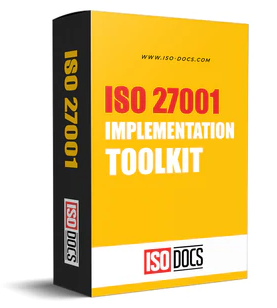How ISO 27002 Supports ISO 27001 Annex A Controls?
Introduction
ISO 27001 is the international standard specifically designed to assist organizations in establishing and effectively operating an Information Security Management System (ISMS). This means that it lays the groundwork of what is expected to comply but does not provide detailed information regarding how to do it. This is where ISO 27002 comes in to provide detailed information required to comply with ISO 27001. This article discusses how ISO 27002 supports the implementation of ISO 27001 Annex Controls.

Ways ISO 27002 Provides Support
There are several ways through which ISO 27002 supports ISO 27001 Annex A controls, including the following:
-
Provides Context: ISO 27002 helps organizations implement ISO 27001 by providing the necessary context for effective implementation. This context is in the form of background to each control and the rationale for its implementation. Business and security leaders in the organization can therefore better understand why each control is required. This greatly improves the adoption and alignment of selected controls in line with respective business risks.
-
Provides Control Purposes/Objectives: ISO 27002 outlines the objectives of each control, which is very critical in helping organizations understand expected outcomes. For instance, under Business Continuity (5.30), it explains that the objective is to ensure system availability during disruptions. This means that an organization implementing this control can develop metrics around the availability objective. Hence, ISO 27002 allows for the adoption and application of effective measures. These measures are crucial in assessing the performance f the controls after they have been implemented and been operational for a given period.
-
Explains Implementation Steps: Annex A of ISO 27001 only lists the controls without providing implementation steps. This makes it difficult for security professionals, such as an ISO 27001 Lead Implementer, to effectively implement the standards using the standard only. Fortunately, ISO 27001 provides these implementation steps. Annex A requires access control; ISO 27002 expands on this to provide the steps we can use to effectively implement and enforce access control within an organization. This greatly provides more clarity and avoids ambiguity during implementation.
- Provides Real-world Examples: The other support provided by ISO 27002 to ISO 27001 is real-world examples. It provides several practical scenarios are in for each control, giving security professionals and business leaders a wide choice to select from. This is very key since there are several ways in which single control can be implemented. Using ISO 27002, an organization can choose the most appropriate way to implement Annex A controls that is in line with its circumstances and operating environment.
-
Customization: One key element security and business leaders need to understand is that while ISO 27001 is generic in nature, ISO 27002 encourages tailoring of selected controls to suit the organization’s unique requirements. It allows organizations to ensure alignment of the ISO 27001 with prevailing situations in these operations. Customization also provided the following benefits;
- Allows for flexibility within the organization in line with operational requirements.
- Supports risk-based implementation of controls for effective results rather than just for the sake of implementation.
- Avoids over-implementation of controls as the organization gets to select only the those that are relevant for its operations.
- Enhances cost efficiency as cots are aligned to relevant controls.
- Allows for flexibility within the organization in line with operational requirements.
-
Supports Consistency: As organizations go through the process of ISO 27001 implementation, there is a risk of inconsistency where the same control can be interpreted differently across the organization. For example, one team in an organization may understand access control as pertaining to strong passwords while another one see it as associated with Multi-Factor Authentication (MFA). ISO 27001 addresses this risk by ensuring controls are standardized and their interpretation us always the same.
- Facilitates Audits: ISO 27002 helps organizations to successfully pass an ISO 27001 compliance audit in several ways. For example, the standards allows them to define audit criteria as well as the types of evidence needed to demonstrate compliance with ISO 27001 controls. The standard also encourages organizations to maintain the necessary documentation, which is key to providing the necessary evidence. Hence, ISO 27001 reduces subjectivity that often arises in compliance assessments.
Conclusion
As explained in this article, ISO 27002 serves as a comprehensive implementation guide for ISO 27001 Annex A controls. Its role is to bridge the gap between Annex A control requirements and the real-world application of those controls. Organizations that leverage both standards together can build a more effective, risk-based, and auditable ISMS, ensuring robust protection of information assets and compliance with regulatory obligations.


